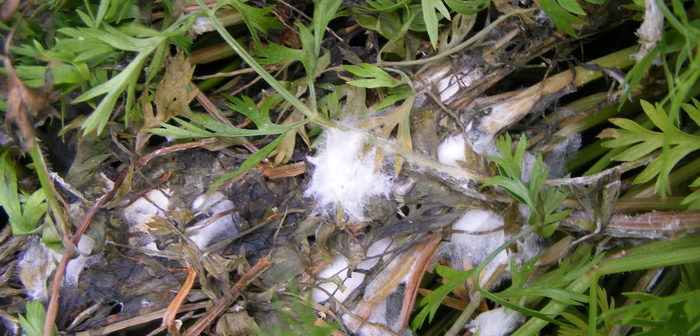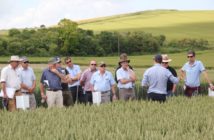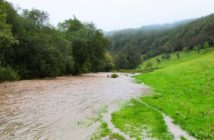BASF and ADAS have created one of the most practical, effective and elegant ICM systems in the UK. It is focused on controlling Sclerotinia, a widespread and serious disease of carrots, affecting yield and quality. Growers can integrate cultural and chemical control methods and use a monitoring service for disease risk.
ICM starts with a pioneering cultural technique using a specially designed carrot clipping machine developed by Howard Hinds of Root Crop Consultancy together with Wroot Water. The WrootClip Master 3 is a three-bed clipping system, now being more widely used in the UK. Ten years of trials results confirm that clipping consistently reduces Sclerotinia control later in the season by around 50-60%. The technique involves clipping foliage between the rows when foliage starts to fall over, as Nairobi does, and before disease is evident. Clipping foliage allows more air movement within the canopy and so disease pressure is reduced.
There are several clipping units contracted out across the UK, covering Yorkshire, Shropshire, Lincolnshire, Nottinghamshire and Norfolk. “The three-bed clipper follows drilling patterns and is available via specialist contractors. The technique has no adverse effect on yield.”
Robert Storer of BASF says the ADAS/BASF Sclerotinia Monitoring Service monitors patterns of sclerotial germination each week for twelve weeks from July through to August. “Depots of carrot sclerotia are monitored at two carrot growing sites, one in Nottinghamshire and the other in Suffolk, as well as in some cereal crops.Sclerotia germinate when the soil is moist and soil temperatures reach approximately 8-10°C, releasing airborne spores which infect carrot crops.”
“The most recent bulletin reports that some crops are now near or at canopy closure and senescent foliage may start to develop from now on. Apothecia have been found in the Nottinghamshire crop, so airborne spores will be present from now on. Protectant fungicides are strongly advised ahead of canopy closure”
“Growers should start fungicide applications early, before the canopy closes over, as once Sclerotiniais established in the crop, it is almost impossible to get on top of it. Many growers apply four fungicides in a programme, often targeting Alternaria at the same time, and alternating products with different modes of action to minimise resistance risk,” says Robert.
Signum is fully approved in carrots and provides broad-spectrum disease control of Sclerotinia, Alternariaand Powdery mildew as a protectant fungicide. “It should be placed at the base of the plant before canopy closure and the ground is still visible. This is because infection starts here when old leaves come into contact with the ground. The Sclerotiniafungus invades diseased, senescing or decaying leaves of the carrot crop, particularly those in contact with the soil.
This really is an elegant system; with a predictive section, a significant cultural control method and the fungicide programme all working together to improve disease infection. Real ICM working in the field,” says Rob.




